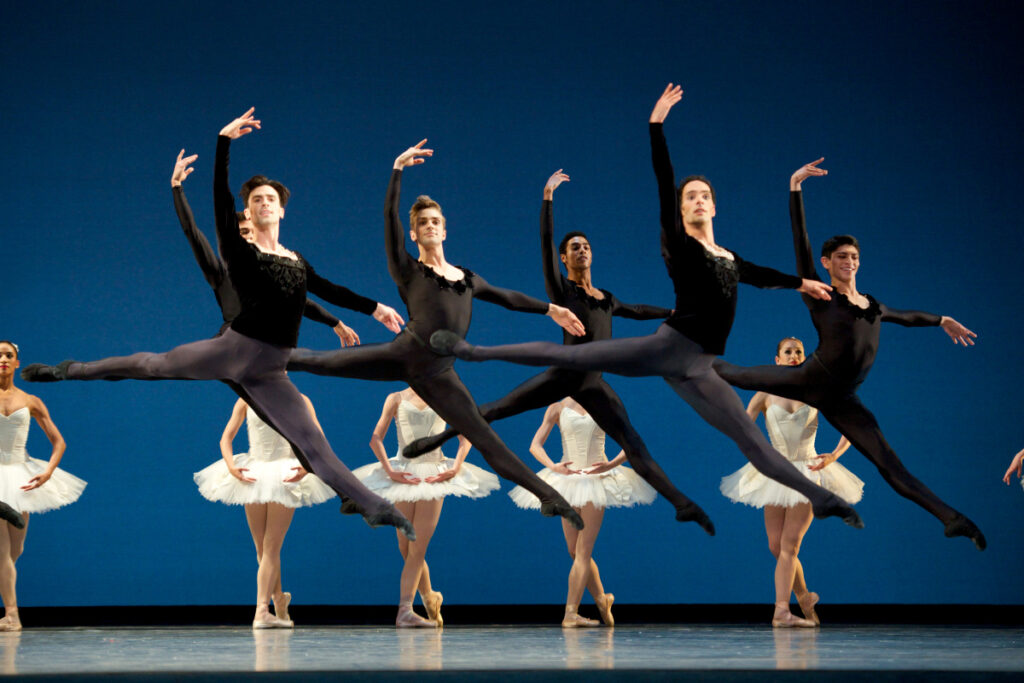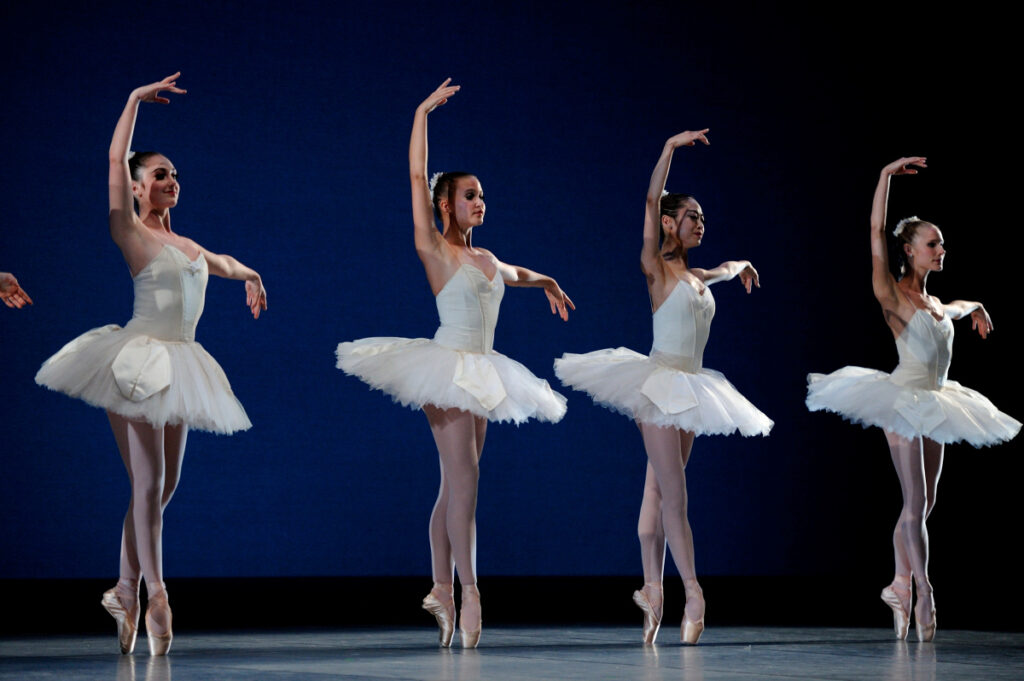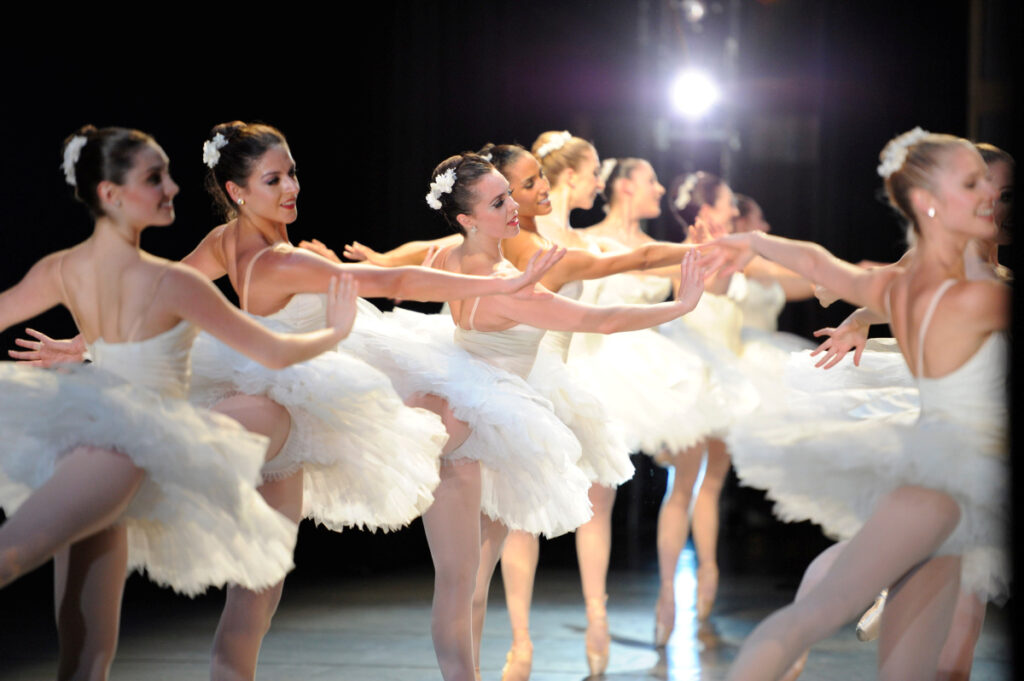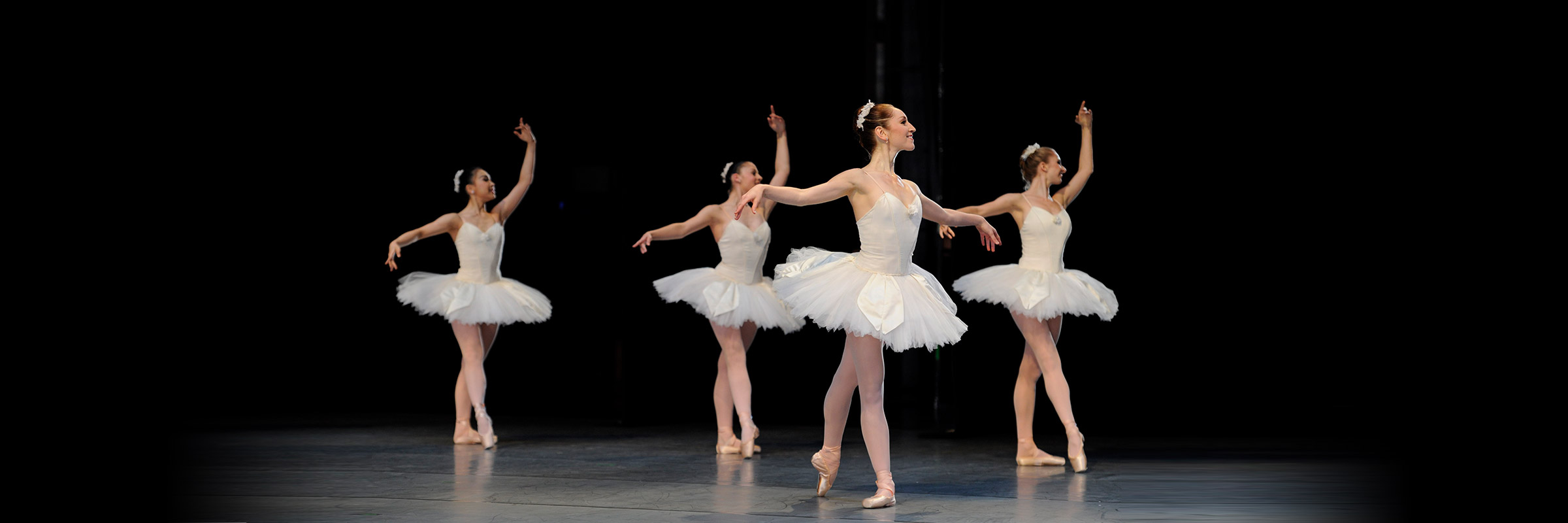About Balanchine’s Symphony in C
Complex. Powerful. Breathtaking.
When George Balanchine made Jewels in 1967, it wasn’t the first time he’d filled the stage with the flash and fire of gemstones. As guest ballet master for the Paris Opéra Ballet in 1947, he created Le Palais de cristal (The Crystal Palance) in a mere two weeks. With simplified sets and a new name drawn from its score by Georges Bizet, Symphony in C premiered at New York City Ballet the following year. The large-scale shimmering white ballet was to become what many consider one of Balanchine’s masterpieces.

Balanchine was introduced to Bizet’s composition by his longtime collaborator, Igor Stravinsky. The score, composed in 1855 when Bizet was only 17 and still a student at the Paris Conservatoire, had been lost for decades and was not performed until 1935, long after the composer’s death. Although Symphony No. 1 in C Major is regarded as a fine example of early Romantic music (with a stylistic resemblance to the work of Franz Schubert, who was largely unknown in Paris at the time), Bizet is best known for his opera Carmen, which he wrote shortly before his death in 1875.
Symphony in C entered San Francisco Ballet’s repertory in 1961 and has appeared at regular intervals since then, most recently in 2011. Demanding endurance along with clean, precise technique, it’s one of those ballets that help keep the Company on its classical game. And Artistic Director & Principal Choreographer Helgi Tomasson has good reason to keep bringing it back, given its reputation as one of Balanchine’s most widely loved masterworks. Among those Symphony in C has impressed was a young dancer and budding choreographer in 1948 by the name of Jerome Robbins. After seeing the brand-new New York City Ballet dance it in its first season, he was so taken with the ballet (and Tanaquil LeClerq’s performance in the adagio movement) that he immediately inquired about working with the company. Thus began his lifelong relationship with Balanchine and New York City Ballet.

According to Balanchine Trust répétiteur Elyse Borne, who staged Symphony in C for SF Ballet, its complexity makes it nearly as hard to set as to dance. “You have four movements, and each one is like three ballets—the corps has one, the soloists have another, and the principals [have another],” she said. “The complexity is unreal.”
But Borne was equally familiar with the challenges of dancing this ballet. “The principal role in the third movement was the hardest thing I ever danced,” she said. “It’s a gut buster—the girl does everything the man does. It’s like doing a male variation, all big jumps. And then she has to turn around and start the fourth movement!” Borne worked with Tomasson on casting, and she said she liked to give the third-movement roles to younger dancers “because they don’t know how hard it is.” That kind of challenge can help them grow artistically. Though being able to turn and jump well are important for the allegro movements, for the adagios she looked for musicality. “You need someone who can bring life into the music.”

Borne tried to pass on what Balanchine said to her when she first learned Symphony in C. “He saw me do it the first time in Copenhagen, the day of the performance,” she said. “He made me come flying out of the wings over and over, after the adagio. He said, ‘You have to go bang!’ I thought my legs were going to fall off! All of those corrections we used to hear over and over were so annoying, but now I find myself re-creating [them], like not bouncing out of fifth position—that’s what keeps the corps in symmetry.”
“Symphony in C is just glorious to watch, visually stunning, with fantastic music,” says Tomasson. For Borne, the beauty of the ballet culminates in its ending. “How simply and yet how powerful the image is to watch,” she said, “and how breathtaking.”
by Cheryl A. Ossola
THIS PRODUCTION WAS PART OF THE 2022 SEASON
Header Image: San Francisco Ballet in Balanchine’s Symphony In C // Choreography by George Balanchine © The Balanchine Trust; Photo © Erik Tomasson








